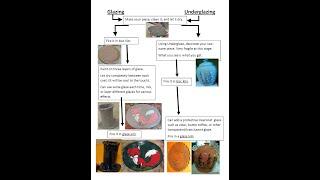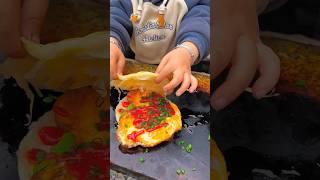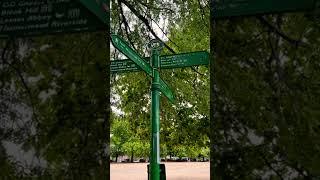
Brief Overview of pottery steps from raw to finished
This is a very handy overview for people trying to understand how we get from raw clay to a finished piece. (Building, Cleaning, then choosing if you wish to do Glaze or Underglaze).
There are two main routes: Glazed or Underglazed
Other options: You can also just fire it to bisque and leave it like that (like a terra cotta flowerpot). In this stage you can also paint it with regular paints like acrylic paint, oil paints, wood stains, or house paint. Many people add a clearcoat on top of these sorts of paints since there won't be glaze to waterproof it.
There are a few ways of mixing glaze and underglaze, and I touch on them more in the Underglazing video.
Most people will go the glaze route.
You will build your piece. Clean it. Fire it in our bisque kiln. Paint it with pottery glazes. Then fire it again, but this time in a glaze kiln. And your piece is done!
For Underglaze, there are two types of underglaze. Some are meant to go on raw clay, but some are to be used on bisque clay (that's been fired once). Please read the bottle to determine which ones you are looking at.
You will build your piece, clean it, and let it dry. If your underglaze is for raw clay, you can use it now. Fire your piece. If your underglaze was for bisque clay, you can use it now. For both types of underglaze, you usually put a clear or translucent glaze on top to waterproof it. Then fire it in the glaze kiln. And they're done!
There are two main routes: Glazed or Underglazed
Other options: You can also just fire it to bisque and leave it like that (like a terra cotta flowerpot). In this stage you can also paint it with regular paints like acrylic paint, oil paints, wood stains, or house paint. Many people add a clearcoat on top of these sorts of paints since there won't be glaze to waterproof it.
There are a few ways of mixing glaze and underglaze, and I touch on them more in the Underglazing video.
Most people will go the glaze route.
You will build your piece. Clean it. Fire it in our bisque kiln. Paint it with pottery glazes. Then fire it again, but this time in a glaze kiln. And your piece is done!
For Underglaze, there are two types of underglaze. Some are meant to go on raw clay, but some are to be used on bisque clay (that's been fired once). Please read the bottle to determine which ones you are looking at.
You will build your piece, clean it, and let it dry. If your underglaze is for raw clay, you can use it now. Fire your piece. If your underglaze was for bisque clay, you can use it now. For both types of underglaze, you usually put a clear or translucent glaze on top to waterproof it. Then fire it in the glaze kiln. And they're done!
Тэги:
#pottery #Athabasca_Pottery #Overview_of_building_potteryКомментарии:
Brief Overview of pottery steps from raw to finished
Athabasca Pottery
Chinese burger Grandpa doesn’t cook well
Tongguan Roujiamo
Walk across London on Green Chain Walk if you dare #walklondon #wewalk #justwalk #uk #uktourism
VLW Virtual London walking
AMS Central Front: 400 Player Warfare!
ACS Airsoft
"Revolvers" Official Visual By SS Choirboy
KEOTIC VISUALS
Az Agrit Venatoria La Baraggia Caccia a Fagiani e Starne con Franchi
Caccia e Dintorni
Georgiana Lobont Adrian Peste - Nu mai dau la nimenea | Florin Peste Records
Florin Peste Records











